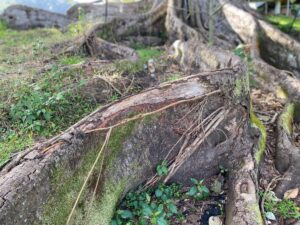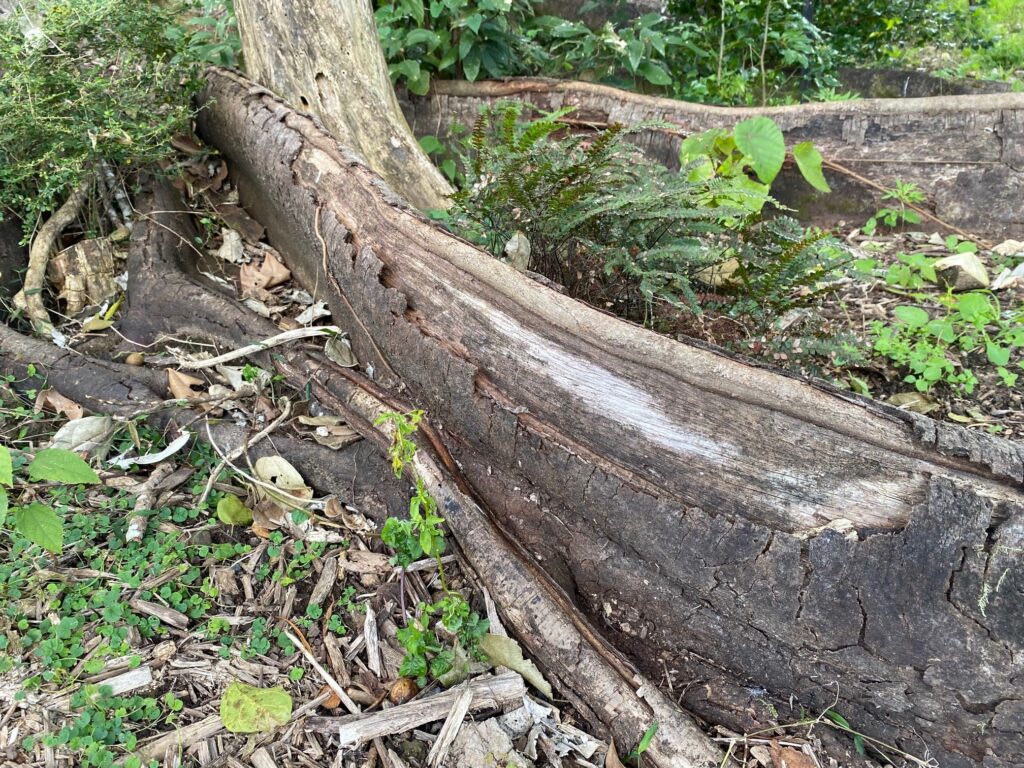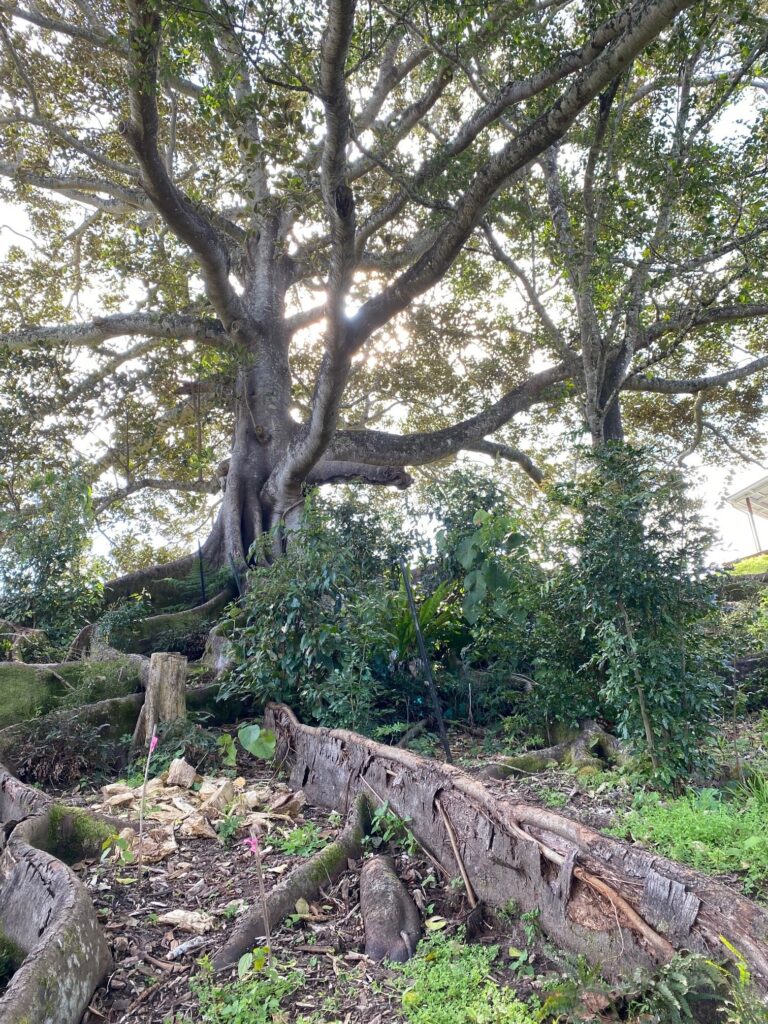Thanks to the keen eye of a Land for Wildlife Officer, this much loved Moreton Bay Fig tree was diagnosed with a bad case of sunburn – note the peeling bark on the roots. The landholders quickly took action and the long-term prognosis for this tree is now hopeful.
We are caretakers of a beautiful huge Moreton Bay Fig at Elaman Creek on unceded Gubbi Gubbi land. The fig is affectionately named The Elder. It provides food and shelter to 70+ bird species that we’ve noted, as well as countless insects and small creatures that have their place in the ecosystem. This fig fills us with awe, delight and wonder every day and we do not take this for granted. So, you get the picture – we clearly love this tree. This is a tale of misguided care and rookie errors.

The fig grasps the southern side of a mountain ridge and its roots cascade down like octopus arms. It had a denser canopy on the eastern side and was reasonably open on the western side, with some evidence that limbs had been removed or damaged.
In 2016, when we first began to care for this fig we removed many large Devils Figs, Lantana and straggly Acacias from under its massive canopy. We spread weed mat and truckloads of mulch over the cleared area. At the same time, we removed a large Jacaranda tree which sat adjacent to the fig along the western ridge. It all looked good, and we sat back and enjoyed the seasonal changes to the wildlife sharing the fig with us.
In May 2020 we enlisted the help of Alan Wynn, our Conservation Partnerships Officer with Sunshine Coast Council, for assistance in identifying the seedlings which were popping up under the fig as well as seeking general advice on shade grasses. Never underestimate the value of expert knowledge.
Alan recognised the peeling bark on the western aspect of the extensive root system as sunburn. He provided us with interim advice and suggested we consult an arborist. We consulted an arborist immediately and were provided with several actions to take to mitigate and manage what was significant root sunburn. The tree did not appear unhealthy and there was no obvious limb damage. By clearing the Devils Figs, shrubs and Jacaranda we had unwittingly exposed the root system to the damaging western sun without applying any ‘sunscreen’.

Acting on the advice provided we immediately mulched from the root zone to the drip line, with forest mulch. The purpose of this mulch was to help protect the surface roots, reduce surface soil temperature and provide a resource for beneficial fungi and soil biota. The arborist also suggested spent mushroom compost could be beneficial, but we didn’t do this, mostly because we couldn’t find a large enough supply of it at the time.
Secondly, we used shade cloth to reduce further sun damage to the exposed buttress roots while allowing good air circulation. The cloth is strategically placed to shelter the large roots and remains in situ for most of the year. It is removed during winter when the western sun is lower in the sky and not as fierce.

The next step was to plant a row of fast-growing trees (e.g. Macarangas and Green Kamala), not too tall, to provide some protection from the western sun. Then behind that row, at the outside of the canopy, we have planted another row of slower growing small trees (e.g. Syzygiums and Backhousias) to provide further protection long-term. We were told the canopy should start to grow down to meet these trees and balance itself out in time.
Finally, we treated the tree with several bags of organic fertiliser to balance the impact of the mulch and nourish the tree. The arborist did not feel it was necessary to remove dead bark and rotting timber from the buttress roots.
We were reassured that the tree should survive with these steps in place, and while we were a little worried, we were also horrified at our naivety.
So come August 2022, and the latest sunscreen report. The trees have grown, and we are hopeful that this year may be the last year we need to protect the roots with the shade cloth.
The damaged roots have survived with signs of new growth. The western side of the canopy has begun to thicken and drop and there are quite a few new shoots growing from the larger branches.
Article and photos by Kerry
Land for Wildlife member
Elaman Creek, Sunshine Coast

Thank you for sharing this information. I hope the Moreton Bay Fig is still doing well. We have a large Moreton Bay Fig which we love. I am wondering whether it is possible to put soil and grow grass over some of the buttress roots that are more than 5-10 metres from the trunk of the tree. I don’t know if these buttress roots that look like a snake rising out of water need to be exposed, some are under the canope and others are beyond the canopy. Some are up tob 0.3 metres above the ground.
Kind regards
Bob